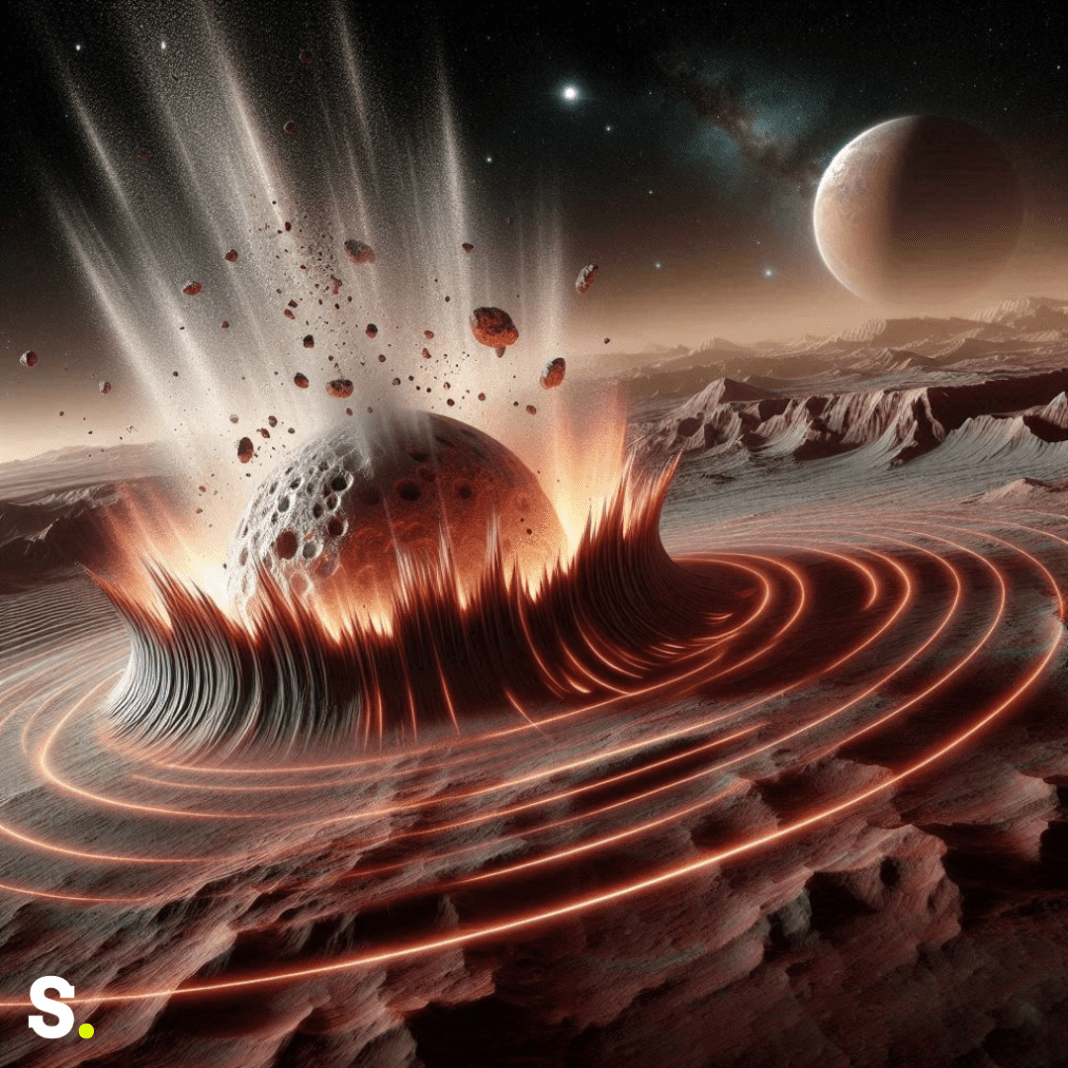Marsquakes: More Than Meets the Eye
Mars, our neighboring red planet, is often shaken by mysterious quakes. These quakes, known as marsquakes, aren’t always caused by the shifting of the planet’s crust like earthquakes on Earth. Instead, many of these tremors are triggered by meteorites crashing into the Martian surface. A team of researchers analyzing data from NASA’s InSight lander made a fascinating discovery: some marsquakes are caused by meteorites striking Mars at incredible speeds.
With its mission to explore Mars since 2018, NASA’s InSight lander is equipped with a unique tool known as the Seismic Experiment for Interior Structure (SEIS). SEIS detected six seismic events that were traced back to meteorites. These meteorites generate unique acoustic signals when they zoom through the Martian atmosphere, allowing scientists to identify them as the cause of these quakes. This discovery led to a new category of marsquakes called VF (very high frequency) events.
How Meteorites Shake Mars
When a meteorite strikes Mars, it happens incredibly quickly, often in just fractions of a second. This is much faster than the few seconds it takes for tectonic processes to cause similar-sized quakes. The VF marsquakes are so brief because meteorites travel at speeds over 3,000 meters per second (about 9,842 feet per second)! This rapid impact is why these marsquakes have their unique classification.
Before this discovery, scientists estimated the meteorite impact rate on Mars by comparing crater frequencies on its surface with those on the Moon. However, Mars and the Moon are very different. Mars is closer to the asteroid belt and has a stronger gravitational pull, making it more likely to be hit by meteorites. Unlike the Moon, Mars is covered in dust, which often hides craters, making them harder to count from space.
InSight’s SEIS instrument helps overcome these challenges. It can detect the seismic waves produced by meteorite impacts, even if the resulting craters are buried under dust. For example, SEIS detected a massive quake linked to a new crater about 150 meters (492 feet) wide. Using data from SEIS and images from the Mars Reconnaissance Orbiter’s (MRO) Context Camera (CTX), researchers confirmed that other detected marsquakes were also caused by meteorite impacts.
Why Mars Is a Meteorite Magnet
Mars is particularly vulnerable to meteorite impacts for several reasons. First, Mars is a larger target than many other bodies in our solar system, meaning it has a greater gravitational pull to attract space rocks. Its proximity to the asteroid belt, a region filled with rocky debris, also increases the chances of impacts.
Compared to Earth, Mars has an extremely thin atmosphere. The majority of meteorites on Earth burn up before they reach the surface, producing amazing shooting stars. Mars, however, lacks this protective shield, so more meteorites make it through and strike the surface. These impacts can occur frequently and with great force, creating the VF marsquakes detected by SEIS.
Understanding these impacts is crucial for several reasons. They first aid in the age determination of Mars’ surface by scientists. By studying impact rates, scientists can figure out how old different regions of Mars are. This technique has revealed that while some parts of Mars are billions of years old, others are much younger due to volcanic activity.
Secondly, knowing the impact rate can help protect future Mars missions. If we know when and where meteorite impacts are likely to occur, we can better plan the landing and exploration sites for robots and, eventually, human astronauts. While Earth’s thick atmosphere protects us from most meteorites, Mars’ thin atmosphere means space rocks pose a more significant hazard.
The Continuous Watch for Space Rocks
The study of VF marsquakes has opened up a new way to monitor meteorite impacts on Mars. Researchers estimate that about 280 to 360 VF quakes happen each year. These findings are essential for understanding Mars’ history and preparing for future exploration.
By using seismic data to track meteorite impacts, scientists have added to the number of known craters on Mars, many of which were previously hidden from view. This method provides a more accurate picture of how often Mars is bombarded by meteorites and helps us understand the dynamic nature of our planetary neighbor.
Marsquakes caused by meteorite impacts reveal a lot about the red planet’s environment and history. These findings underscore the need for continuous monitoring and study as we prepare for future missions to Mars. Whether it’s through the eyes of robots like InSight or the footsteps of future astronauts, every piece of data brings us closer to unraveling the mysteries of Mars.




